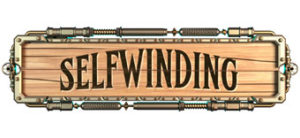DIY Edit: 06 Description: Camera Pan
Even though I’m an editor for hire, I firmly believe in self-editing. Each month I’m going to drop a tip for developing your ability to edit your own work or identify things to look for as you edit. Make sure to check out all the DIY Edit Tips to improve your self-editing.
06 Description: Camera Pan
Details make a story, but so often I read over a description and my attention is darting all around a room, or all over a character, and I can’t make sense of how the whole thing fits together. It’s the writer’s job to guide the camera and to show the reader the details in an order that will allow them to imagine what’s being described and assemble the whole picture.
When a character first walks into a new setting that you plan to describe in detail, organize the description to follow a camera pan of the room. This can be a vertical pan (up and down) or a lateral pan (left and right). This helps the reader orient the character within the space and gives a clear idea of how the eye is drawn (i.e., what is most important or impressive about the setting).
For example, when a character enters a foyer in a mansion, the description might start with the flooring, go up to the stairs, wrap around to the chandelier, describe the chandelier with more detail, and then come back to the first floor foyer. A logical flow up, up, and back to the character.
If the character is very tired and coming back to their bedroom, the description of the room might start with their bed and then include what they passed on their way from the door to a faceplant, or what they can see through the slits of their eyes across from the bed. Regardless, it’s important to ground the reader so that later when ninjas break through the window, the reader knows if the window is next to the bed or across from it.
Even a character who is out of their mind with anxiety, drugged, or otherwise impaired will look around a room in a way that emphasizes the important information. They may not be able to perfectly orient themselves, but they’ll be able to hit on the most important details and then flesh out those details once they’re feeling calmer.
This works the same for describing a person’s appearance. Either describe from the feet up (if the first thing the character would observe is the person’s shoes or feet), or describe from the head down (if the first thing the character observes is the person’s hair or face). Some details can emerge later—a mole the character didn’t notice earlier, nervous tics, or maybe as the couple falls in love his features become more attractive—but that first description should follow a logical flow.
Keeping the description organized helps the reader visualize and remember it. Organizing the details emphasizes your careful work, and lets the reader focus on those details rather than struggle to follow a darting eye.
Like what you read? Help me continue making this content by leaving a tip through Ko-fi.

I love this approach! When I write, I feel like I’m describing a film I’m watching in my head, so the idea of camera pans fits perfectly 🙂
I’m the same way, which is why this analogy works for me so well, but there’s something to be said for presenting textual information in an organized way so it’s easier for a reader to follow.